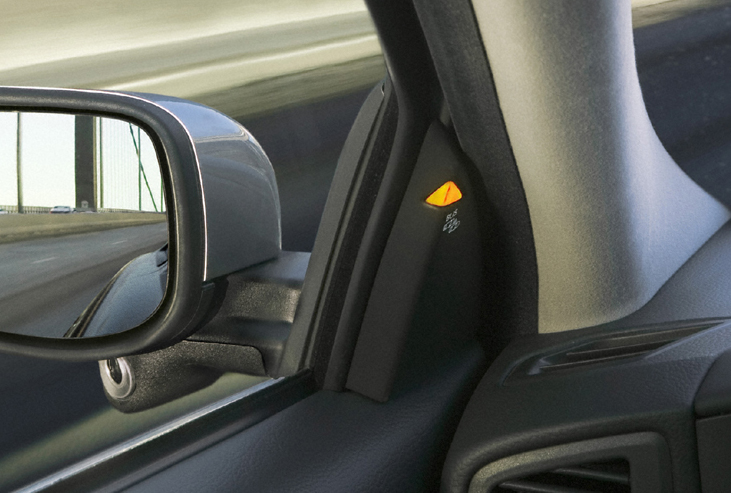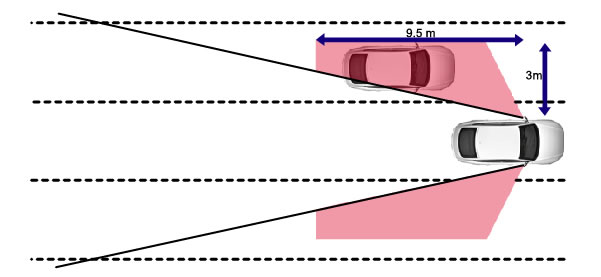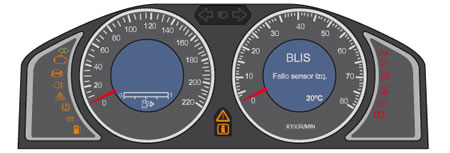One of the most common risks when driving a vehicle is the lack of visibility in the rear view mirrors, because there is a blind angle or spot where the driver cannot perceive another vehicle while driving, putting other users at risk.
In 2007, Volvo developed a system called BLIS (Blind Spot Information System), which gives information on the blind spot. This system detects if a vehicle enters our blind spot, alerting us of its presence. Over the years, other brands such as Mercedes-Benz, Ford, Opel, Citroën and Volkswagen, among others, have incorporated the system into their own models.
System operation
 The central electronic unit CEM manages the detection system. It receives information on the presence of any object via the cameras located in the rear view mirrors.
The central electronic unit CEM manages the detection system. It receives information on the presence of any object via the cameras located in the rear view mirrors.
Each of the rear view mirrors of the vehicle records 25-30 frames per second. The photographs are compared with each other, thus registering the intrusion of an object, whether motorcycle or car, in the blind spot of the vehicle.
Communication between the mirrors and the CEM (Central Electronic Module) is performed by a LIN communication signal.
 From the BCM (Brake Control Module), the CEM calculates the speed of our vehicle and compares it to the obstacle in the monitored area. Depending on the obstacle, the CEM notifies the user or not.
From the BCM (Brake Control Module), the CEM calculates the speed of our vehicle and compares it to the obstacle in the monitored area. Depending on the obstacle, the CEM notifies the user or not.
The driver receives the warning by means of a group of LEDs located on the A-pillare of the vehicle.
The area monitored by the system is the following:

Operating conditions of the system
This system will react when:
a) Our vehicle overtakes another vehicle with a speed difference of up to 10 km/h.
b) Another vehicle overtakes us with a speed difference of up to 70 km/h.
During daylight, the system reacts to the shapes of the vehicles in the surroundings. In darkness, it also reacts to the headlights of other vehicles.
If the headlights of nearby vehicles are not lit, the BLIS will not detect the vehicle in question.

Some weather conditions such as reflections of a wet road, the sun low on the horizon shining on the camera and the vehicle's own shadow on large illuminated surfaces can cause false warnings.
Activation and deactivation of the system
The BLIS always remains active. The unit allows the deactivation of the warning lights by means of the switch located on the comfort panel. The function can also be reconnect using the same switch.
System failure
Should the CEM detect a failure, it activates a failure code and sends a signal via the CAN (Controller area network) to the dashboard, where a general warning light is lit and a text message is displayed.




